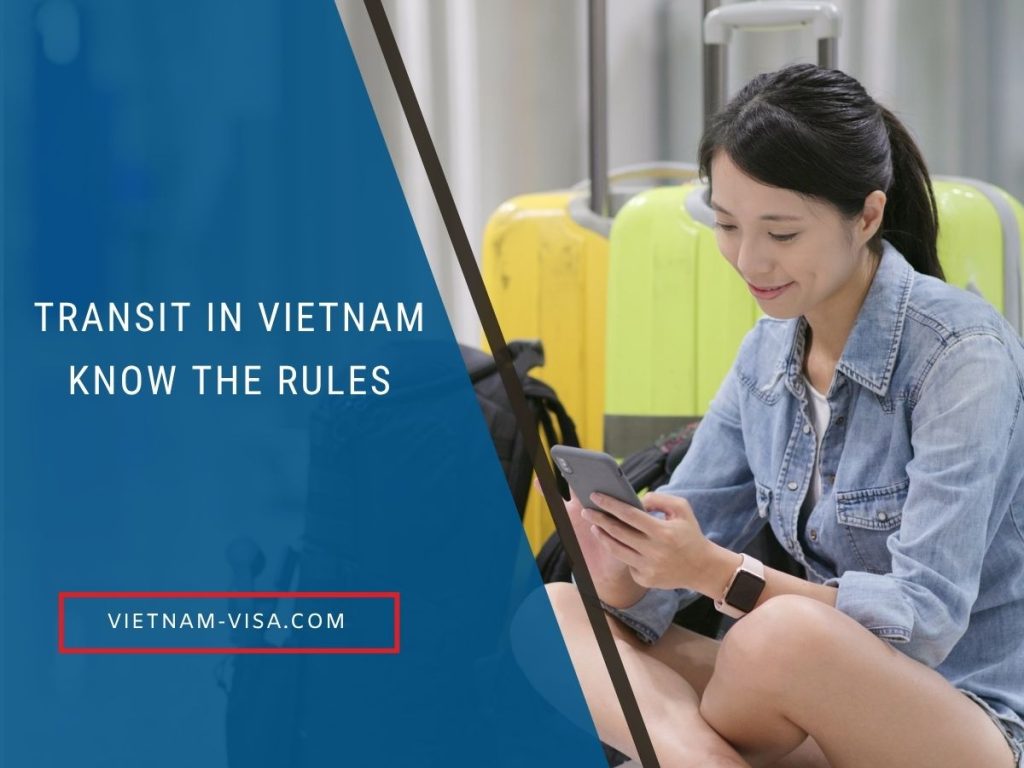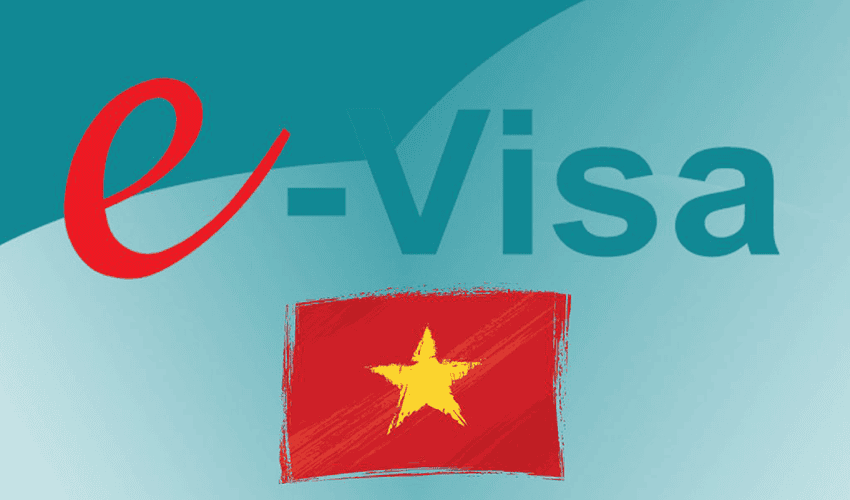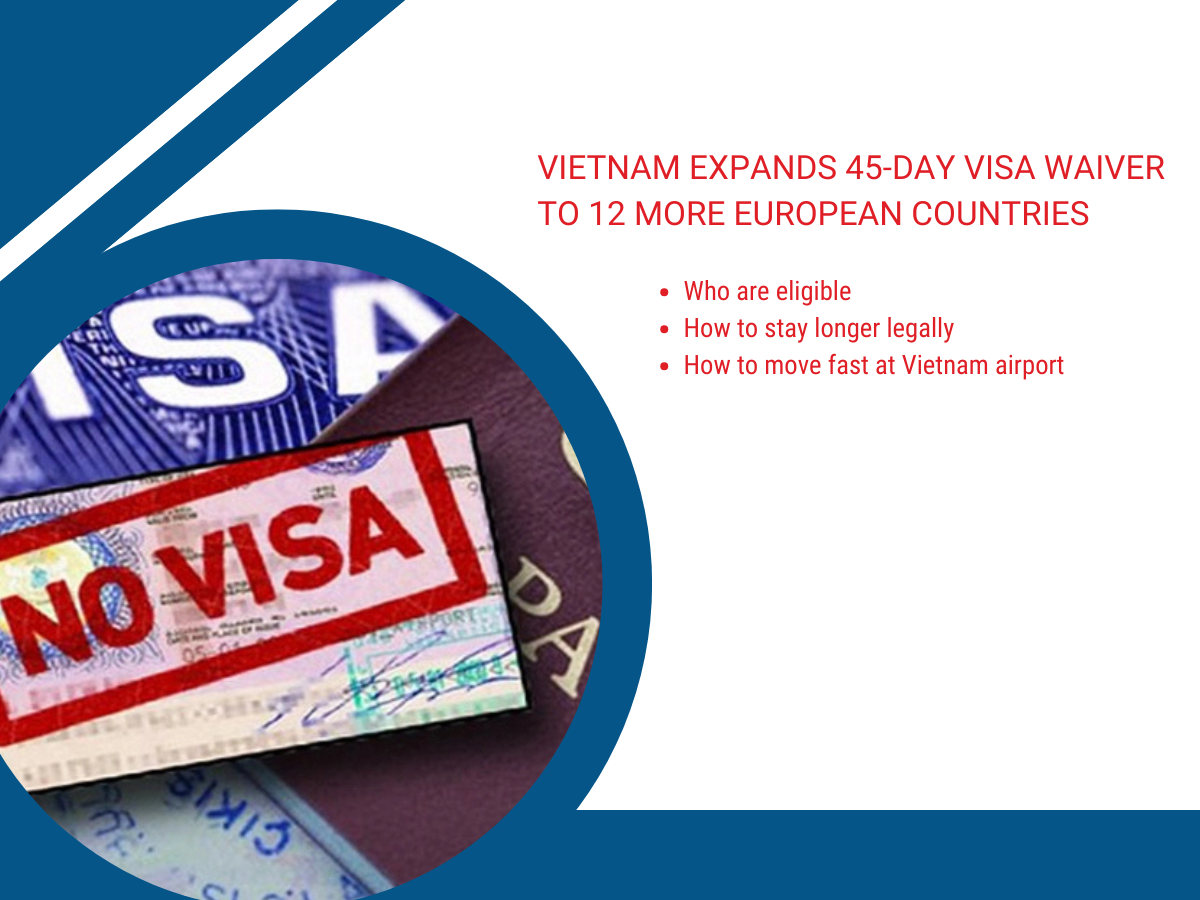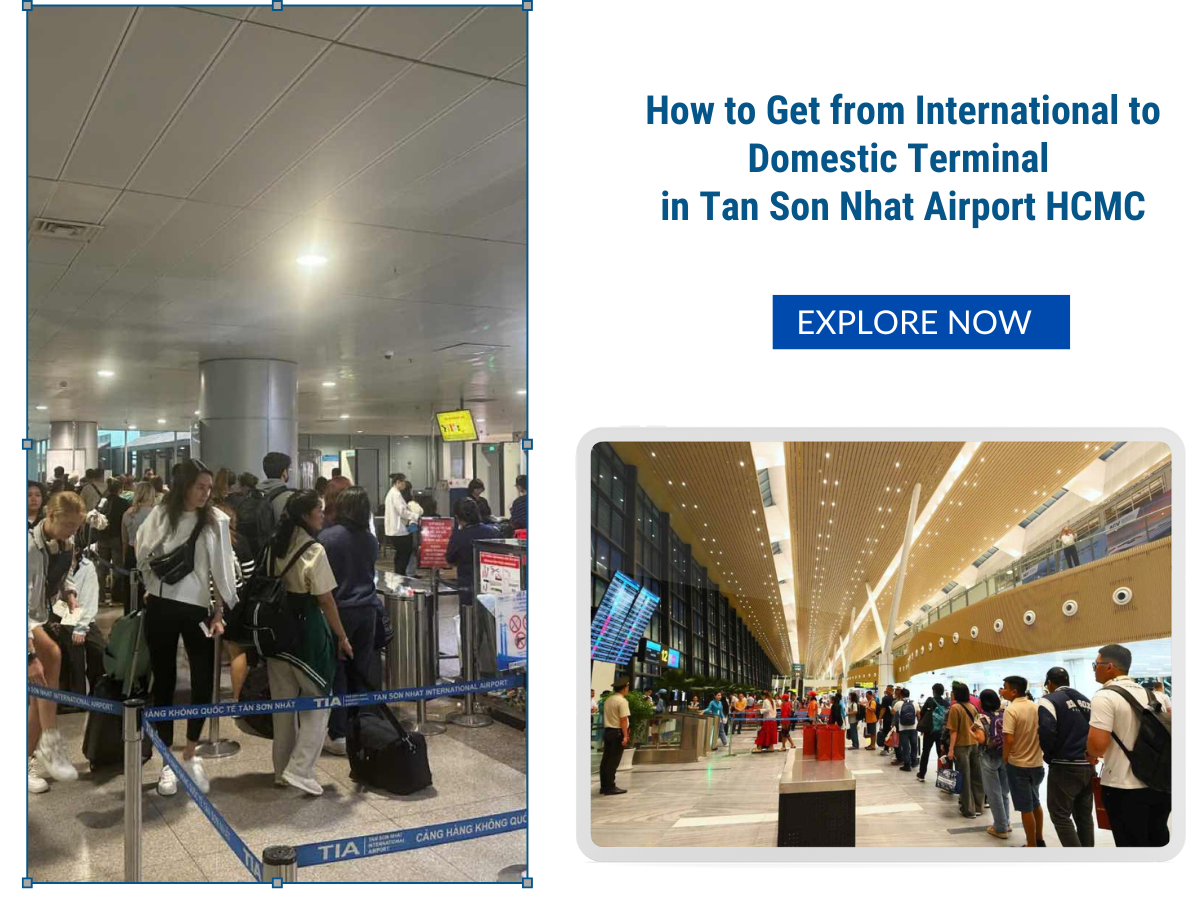Vietnam is a popular destination not only for its rich culture and breathtaking landscapes but also as a major transit hub in Southeast Asia. Every year, thousands of travelers find themselves stopping over in Vietnamese airports—either for a few hours or overnight—on their way to other international destinations
If you’re one of them, it’s important to understand the rules, visa requirements, and procedures involved in transiting through Vietnam. This guide will help you prepare for your stopover and ensure a smooth experience.

Table of Contents
Do You Need a Visa to Transit in Vietnam?
The first question most travelers ask is whether a Vietnam transit visa is required. The answer depends on your nationality, the length of your layover, and whether you plan to leave the transit area of the airport.
You DON’T need a transit visa in Vietnam if:
- Your nationality is included in the Vietnam visa free countries; or
- Your nationality does not benefit from Vietnam visa free policy but:
- You remain inside the transit area of the airport,
- Your layover is less than 24 hours, and
- You are not switching terminals that require re-entry through immigration (for example, changing from an international flight to a domestic one or vice versa).
Otherwise, you will need a visa for your layover in Vietnam.
👉 To determine whether you need a visa, and to apply easily if you do, check this comprehensive Vietnam Transit Visa Guide
Vietnam Transit Scenarios and What to Expect
There are certain cases for a layover in Vietnam that you should keep in mind as their immigration procedure may vary and affect your things to prepare for your trip.
🛫 International to International Transit (Same Terminal)
This is the simplest transit scenario. If both flights are in the same terminal and you’re not exiting the airport, you usually do not need a visa. Just follow signs to your next departure gate.
Note: Some budget airlines do not have baggage agreements with others. If you need to claim your baggage and re-check it, you may be required to clear immigration — which means a visa might be necessary.
🛬 International to Domestic Transit
In this case, you must go through immigration and customs to enter Vietnam and board a domestic flight. That means a visa is required unless you’re from a visa-exempt country.
🧳 Overnight Layover
If your layover is overnight or long enough that you wish to rest at a hotel or explore a nearby city, you will definitely need a visa unless you are from Vietnam visa waiver countries. Keep in mind that not all airports are operational 24/7, and certain terminals may close at night.
👉 Check how to get visa for transit in Vietnam here https://www.vietnam-visa.com/transit-visa/#How_to_Get_a_Transit_Visa_for_Vietnam
Major Transit Airports in Vietnam
Vietnam has three main international airports where transit commonly occurs:
1. Noi Bai International Airport (HAN) – Hanoi
- Terminals: T1 (domestic) and T2 (international)
- Transfer between terminals: Requires shuttle bus or short walk; visa may be needed if going from T2 to T1
2. Tan Son Nhat International Airport (SGN) – Ho Chi Minh City
- Terminal changes require exiting immigration
- Can be congested; fast-track services recommended
3. Da Nang International Airport (DAD)
- Smaller but growing transit hub
- Easier navigation, but limited international connections
Transit Procedures in Vietnam: Step-by-Step
Even when not exiting the airport, transiting can still involve several steps, especially if changing airlines or terminals.
General Transit Steps:
- Disembark and follow signs to “Connecting Flights” or “Transfer Counter”.
- Check with your airline if your baggage is transferred automatically.
- If not, claim your baggage and re-check it, which may involve clearing immigration.
- If immigration is involved, present your visa or e-visa and passport unless you get visa waiver.
- Proceed to the security checkpoint and to your departure gate.
Want to avoid lines and get personalized assistance? Consider using a professional fast-track service.
👉 Learn more about this VIP service here: Connecting Fast Track Service
Tips to Make Your Vietnam Transit Smoother
✔️ Confirm Luggage Transfer
Always check whether your checked baggage is automatically transferred to the next flight, especially when flying with two different airlines or using low-cost carriers.
✔️ Book Flights with a Sufficient Layover
Allow at least 2–3 hours for international transits and 3–5 hours if switching between international and domestic flights.
✔️ Use Fast-Track Services
Vietnamese airports can be busy, especially during peak hours. Fast-track services help you:
- Avoid long immigration queues
- Get assistance with baggage and terminal transfers
✔️ Know Your Visa Status
Use a reliable visa checking tool or consult us to verify your need for a visa and process it in advance if necessary.
Frequently Asked Questions
Yes, if you do not leave the transit area and your layover is under 24 hours or your nationality is included in the visa waiver list. Otherwise, a visa may be required.
Yes, but you will need to clear immigration and need a valid visa if you do not get benefit from Vietnam visa free policy.
You can apply online through trusted services like Vietnam-visa.com, which offers eVisas, visa on arrival.
If you miss a connection and need to rebook or re-check luggage, you may need to pass through immigration. Always ensure you’re covered with a visa just in case.
Conclusion
Transiting through Vietnam can be simple and hassle-free if you understand the requirements and prepare accordingly. Whether you’re making a quick stop in Hanoi, Ho Chi Minh City, or Da Nang, make sure to:
- Check visa rules in advance
- Know your terminal and airline connection details
- Use fast-track services to reduce wait times and stress
Safe travels and enjoy your journey through Vietnam!
Disclaimer: The information provided in this article is for general informational purposes only and may be subject to change without prior notice.







